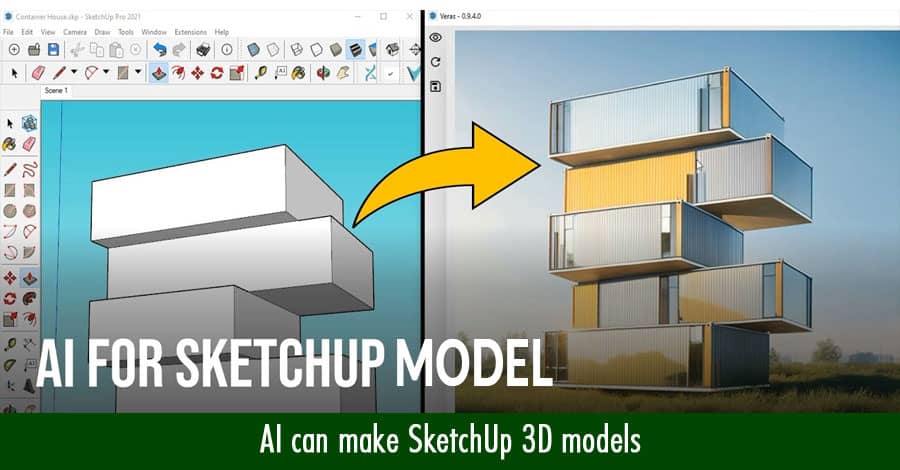Introduction
In today’s rapidly evolving technological landscape, artificial intelligence (AI) is making strides in various industries, and the world of design is no exception. SketchUp, a popular 3D modeling software, has caught the attention of AI enthusiasts and professionals alike.
The Evolution of 3D Modeling
The Traditional Approach: Historically, 3D modeling in software like SketchUp was a meticulous, time-consuming task. Designers and architects had to painstakingly create and manipulate vertices, edges, and faces to bring their ideas to life. While this approach yielded impressive results, it often demanded extensive expertise and countless hours.
The Rise of AI in 3D Modeling: Enter artificial intelligence. AI algorithms have revolutionized 3D modeling by automating many of the labor-intensive processes. These algorithms can analyze 2D sketches and convert them into intricate 3D models, significantly reducing the workload for designers.
How AI Enhances SketchUp
Speed and Efficiency: One of the most noticeable benefits of using AI in SketchUp is the speed and efficiency it brings to the table. AI algorithms can quickly generate complex 3D models based on simple input, saving designers valuable time.
Accuracy and Precision: AI-driven 3D modeling tools are incredibly precise. They can identify and correct errors in real-time, ensuring that the final model is free from imperfections.
Customization and Flexibility: AI doesn’t just automate; it can also adapt. Designers can fine-tune AI-generated models, adding their personal touch and creativity while still benefitting from the AI’s foundational work.
Challenges and Limitations
Learning Curve: While AI simplifies many aspects of 3D modeling, there is still a learning curve involved in mastering these tools. Designers need to understand how to work in tandem with AI to achieve the desired results effectively.
Data Dependency: AI algorithms rely heavily on data. To create accurate 3D models, they need access to vast datasets of existing designs, which can be a limitation for niche or specialized projects.
The Future of 3D Modeling with AI
The future looks promising for AI-powered 3D modeling in SketchUp. As AI algorithms continue to advance, we can expect even more intuitive, efficient, and powerful tools to emerge. Designers will likely find themselves relying more on AI to streamline their workflows and bring their visions to life.
Conclusion
In answer to the question, “Can AI make SketchUp 3D models?” – the answer is a resounding yes. AI has proven its ability to enhance the 3D modeling process in SketchUp by increasing speed, accuracy, and customization options. While challenges remain, the future holds great promise for further improvements in AI-driven 3D modeling.
FAQs
Is AI 3D modeling in SketchUp suitable for beginners?
Absolutely! AI-powered tools in SketchUp can simplify the modeling process, making it accessible to both beginners and experts.
Can AI-generated models match the creativity of human designers?
AI-generated models serve as a foundation, but human designers can add their unique creativity and artistic touch to enhance and customize them.
Are there any specific industries benefiting from AI in SketchUp 3D modeling?
AI-driven 3D modeling is valuable across various industries, including architecture, interior design, gaming, and animation.
How can I get started with AI 3D modeling in SketchUp?
Start by exploring AI plugins and extensions available for SketchUp. Many online resources and tutorials can help you get acquainted with these tools.


